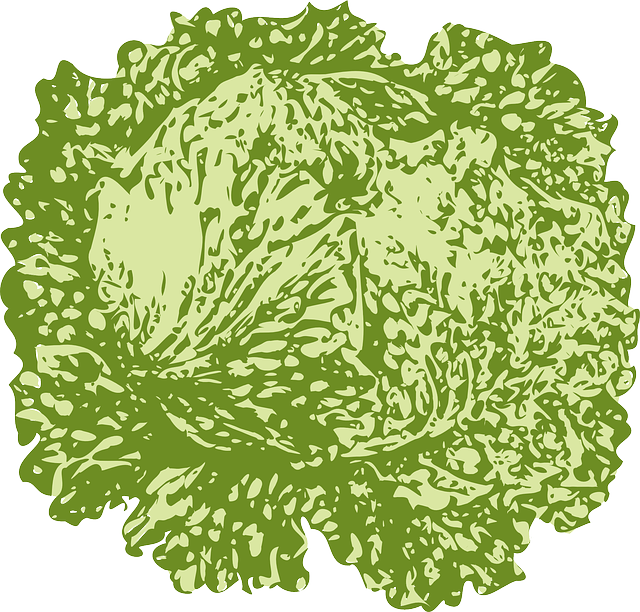پروتيوميات
الپروتيوميات Proteomics، هي دراسة شاملة للپروتينات، وبصفة خاصة بنيتها ووظائفها. وتشكل الپروتينات الأجزاء الحيوية من المتعضيات الحية، باعتبارها المكون الرئيسي للمسارات الاستقلابية الرئيسية في الخلية. وأستخدم مصطلح "الپروتيوميات" لأول مرة في عام 1997
تعقيد المسألة
بعد الـ Genomics, يعتبر الپروتيومكس المستوى التالية في دراسة النظم الحيوية. هذا الفهم أكثر تعقيداً من الـ Genomics في الغالب فبينما العوامل الوراثية للكائن الحي ثابتة تقريباً, يختلف الـ proteom من خلية لأخرى ووقت لآخر.هذا لأن جينات مختلفة ترمز إلى أنواع خلوية مختلفة .هذا يعني حتى المجموعة الأساسية من البروتينات التي تنتج في الخلية بحاجة لتحديد.
كان ذلك ينجز في الماضي بتحليل الـ m-RNA.لكن لم يوجد هذا ليرتبط بالمحتوى البروتيني. من المعروف الآن m-RNA لا يترجم دائماً بشكل بروتينات, وكمية من البروتين منتجة لكمية معروفة من m-RNA تعتمد على المورثة التي نسخ عنها وعلى الحالة الفيزيولوجية للخلية.الپروتيومكس يؤكد وجود البروتينات ويوفر القياس المباشر للكمية الموجودة.
تعديلات مابعد النسخ
إن الذي يسبب الاختلافات ليس فقط النسخ من الـ m-RNA فالكثير من البروتينات خاضعة لتعديلات كيميائية مابعد النسخ واسعة التنوع, وهذه التعديلات هامة في وظيفة البروتينات.
الفسفرة
واحدة كهذه التعديلات هي الفسفرة, والتي تجرى للعديد من الأنزيمات والبروتينات البنيوية أثناء التشوير الخلوي.إضافة الفوسفات إلى حموض أمينية محددة غالباً سيرين وتريونين متوسطاً بسيرين\ تيريونين كيناز, ونادراً تيروزين متوسطاً بتيروزين كيناز, يجعل البروتين هدفاً لربط أوللتفاعل مع مجموعة مميزة لبروتينات أخرى والتي تتعهد على الحيز المفسفر.
لأن فسفرة البروتين من أكثر التعديلات التي تخضع لها البروتينات, الكثير من الجهود في الپروتيومكس موجهة نحوتحديد مجموعة البروتينات المفسفرة في خلية محددة أونوع نسيج محدد في ظروف محددة.هذا ينبه العالِم إلى طرق الإشارة التي تكون نشطة في هذه الحالة.
إضافة اليوبيكويتين
اليوبيكويتين هوبروتين يمكن حتى يضاف إلى ركائز بروتينية محددة بواسطة أنزيمات تسمى "E3-ubiquitin ligases". إن تحديد أي من البروتينات متعددة اليوبيكويتين ممكن حتى يساعد في فهم كيفية تنظيم السبل البروتينية.بالتالي هذه دراسة أصلية إضافية للبروتيومكس. بنفس الطريقة, حالما تحدد الركائز المضاف إليها اليوبيكويتين بواسة جميع ليغاز, تحديد مجموعة أنظيمات الليغاز في نمط خلية محدد سيكون مفيداً.
تعديلات إضافية
إن ذكر جميع التعديلات التي يخضع لها البروتين والتي تدرس في البروتيومكس يحتاج لمناقشة أغلب الكيمياء الحيوية. من أجل ذلك, قائمة صغيرة بالتعديلات ممكن حتى تبين تعقيد المسألة.بالإضافة إلى الفسفرة وإضافة اليوبيكويتين, ممكن حتى تخضع البروتينات (واحدة من غيرها) إمتال, أستلة, إضافة الغليكوزيل,أكسدةوnitrosylation.تخضع بعض البروتينات لكل هذه التعديلات, وغالباً بتجمعات مرتبطة بزمن خاص، وتوضح بشكل مؤكد التعقيد المهم الذي نحتاج للتعامل معه عند دراسة البروتينات من حيث بنيتها ووظيفتها.
بروتينات مختلفة تصنع في ظروف مختلفة
حتى لو يفهم أحدهم نوع خلية محدد, هذه الخلية ممكن حتى تصنع مجموعات بروتينية مختلفة وبأوقات مختلفة, أوتحت ظروف مختلفة.علاوة على ذلك, كما أشرنا, أي بروتين ممكن حتى يخضع إلى تعديلات واسعة مابعد النسخ .من أجل ذلك دراسة البروتيومكس ممكن حتى تغدوبسرعة أكثر تعقيداً, حتى ولوكان الهدف من الدراسة محدود جداً.في الاتجاهات الأكثر طموحاً, مثلاً عندما يتجه biomarker للسرطان -عندما يسدي عالِم البروتيومكس خدمة في دراسة العينات المصلية لسقمى سرطان عدة-إن حجم التعقيد الذي ينبغي التعامل معه مثل أي مشروع بيولوجي متطور في ضخامته.
قيود الدراسة الجينية
يهتم الفهماء كثيراً في البروتيومكس لأنه يقدم فهماً أفضل للكائن الحي من فهم الوراثة.بداية, فترة نسخ الجين تعطي فقط تقدير أولي في فترة التعبير عنه بشكل بروتين.m-RNA منتج بوفرة ممكن حتى يقوض بسرعة أويترجم بشكل غير فعال, يؤدي إلى كمية صغيرة من البروتين.ثانياً, كما أشرنا سابقاً الكثير من البروتينات تخوض تعديلات مابعد النسخ والتي تؤثر في فعالياتها بعمق, على سبيل المثال بعض البروتينات لا تغدوفعالة حتى تفسفر.
Methods such as phosphoproteomics and glycoproteomics are used to study post-translational modifications. Third, many transcripts give rise to more than one protein, through alternative splicing or alternative post-translational modifications. Fourth, many proteins form complexes with other proteins or RNA molecules, and only function in the presence of these other molecules. Finally, protein degradation rate plays an important role in protein content.
طرائق دراسة البروتينات
تحديد البروتينات المعدلة مابعد النسخ
من طرق دراسة البروتينات تطوير ضد نوعي لتلك التعديلات.على سبيل المثال, هناك أضداد تميز فقط بروتينات محددة عندما تكون مفسفرة التيروزين, تعهد باسم أضداد نوعية الفوسفات, وهناك أضداد نوعية لتعديلات أخرى أيضاً.هذه الأضداد ممكن حتى تستخدم لتحديد مجموعة البروتينات التي قد مرت بتعديل بشكل مفيد.
من أجل تعديلات السكر, كإضافة الغليكوزيل للبروتينات, اكتشفت لكتينات والتي تربط السكاكر.هذه ممكن حتى تستخدم كذلك. الطريق الأكثر شيوعا لتحديد تعديل مابعد النسخ هوإخضاع مزيج معقد من البروتينات إلى الاستشراد ثنائي البعد, واذي تعني ببساطة حتى تستشرد البروتينات بدايةً ببعد وحيد, ثم بالآخر, والذي يسمح بملاحظة اختلافات صغيرة في البروتين وذلك بفصل البروتين المعدل عن شكله غير المعدل.هذا المنهج يعهد بـ الاستشراد الهلامي ثنائي البعد. أخيراً, طوٍّرت طريقة أخرى تسمى البروتيوماب التي تجمع SDS-PAGE مع shutgun proteomics للتمكن من الكشف عن التغييرات في هجرة الهلام كتلك في التحليل البروتيني أوالتعديلات مابعد النسخ.
تحديد وجود البروتينات في المزائج المعقدة
Classically, antibodies to particular proteins or to their modified forms have been used in biochemistry and cell biology studies. These are among the most common tools used by practicing biologists today.
For more quantitative determinations of protein amounts, techniques such as ELISAs can be used.
For proteomic study, more recent techniques such as matrix-assisted laser desorption/ionization (MALDI) have been employed for rapid determination of proteins in particular mixtures and increasingly electrospray ionization (ESI).
Computational methods in studying protein biomarkers
Computational predictive models have shown that extensive and diverse feto-maternal protein trafficking occurs during pregnancy and can be readily detected non-invasively in maternal whole blood. This computational approach circumvented a major limitation, the abundance of maternal proteins interfering with the detection of fetal proteins, to fetal proteomic analysis of maternal blood. Computational models can use fetal gene transcripts previously identified in maternal whole blood to create a comprehensive proteomic network of the term neonate. Such work shows that the fetal proteins detected in pregnant woman’s blood originate from a diverse group of tissues and organs from the developing fetus. The proteomic networks contain many biomarkers that are proxies for development and illustrate the potential clinical application of this technology as a way to monitor normal and abnormal fetal development.
An information theoretic framework has also been introduced for biomarker discovery, integrating biofluid and tissue information. This new approach takes advantage of functional synergy between certain biofluids and tissues with the potential for clinically significant findings not possible if tissues and biofluids were considered individually. By conceptualizing tissue-biofluid as information channels, significant biofluid proxies can be identified and then used for guided development of clinical diagnostics. Candidate biomarkers are then predicted based on information transfer criteria across the tissue-biofluid channels. Significant biofluid-tissue relationships can be used to prioritize clinical validation of biomarkers.
إنشاء تفاعلات بروتين-بروتين
Most proteins function in collaboration with other proteins, and one goal of proteomics is to identify which proteins interact. This is especially useful in determining potential partners in cell signaling cascades.
Several methods are available to probe protein–protein interactions. The traditional method is yeast two-hybrid analysis. New methods include protein microarrays, immunoaffinity chromatography followed by mass spectrometry, dual polarisation interferometry, Microscale Thermophoresis and experimental methods such as phage display and computational methods
تطبيقات عملية للپروتيومكس
One of the most promising developments to come from the study of human genes and proteins has been the identification of potential new drugs for the treatment of disease. This relies on genome and proteome information to identify proteins associated with a disease, which computer software can then use as targets for new drugs. For example, if a certain protein is implicated in a disease, its 3D structure provides the information to design drugs to interfere with the action of the protein. A molecule that fits the active site of an enzyme, but cannot be released by the enzyme, will inactivate the enzyme. This is the basis of new drug-discovery tools, which aim to find new drugs to inactivate proteins involved in disease. As genetic differences among individuals are found, researchers expect to use these techniques to develop personalized drugs that are more effective for the individual.[]
Biomarkers
The FDA defines a biomarker as, “A characteristic that is objectively measured and evaluated as an indicator of normal biologic processes, pathogenic processes, or pharmacologic responses to a therapeutic intervention”.
Understanding the proteome, the structure and function of each protein and the complexities of protein–protein interactions will be critical for developing the most effective diagnostic techniques and disease treatments in the future.
An interesting use of proteomics is using specific protein biomarkers to diagnose disease. A number of techniques allow to test for proteins produced during a particular disease, which helps to diagnose the disease quickly. Techniques include western blot, immunohistochemical staining, enzyme linked immunosorbent assay (ELISA) or mass spectrometry.
Proteogenomics
In what is now commonly referred to as proteogenomics, proteomic technologies such as mass spectrometry are used for improving gene annotations. Parallel analysis of the genome and the proteome facilitates discovery of post-translational modifications and proteolytic events , especially when comparing multiple species (comparative proteogenomics).
Current research methodologies
There are many approaches to characterizing the human proteome, which is estimated to exceed 100,000 unique forms, 25,000 genes plus post-translational modifications.[]
In addition, first promising attempts to decipher the proteom of animal tumors have recently been reported.
انظر أيضا
- كيمياء الپروتين
- معلوماتية حيوية
- Cytomics
- فهم الجينوم
- Proteogenomics
- Immunoproteomics
- List of omics topics in biology
- Metabolomics
- Lipidomics
- Shotgun proteomics
- Top-down proteomics
- Bottom-up proteomics
- Systems biology
- Transcriptomics
- Phosphoproteomics
- PEGylation
- Functional genomics
- Activity based proteomics
قواعد بيانات الپروتينات
- UniProt
- Protein Information Resource (PIR)
- Swiss-Prot
- Protein Data Bank (PDB)
- National Center for Biotechnology Information (NCBI)
- Human Protein Reference Database
- Proteomics Identifications Database (PRIDE)
- Proteopedia The collaborative, 3D encyclopedia of proteins and other molecules
المصادر
- ^ Anderson NL, Anderson NG (1998). "Proteome and proteomics: new technologies, new concepts, and new words". Electrophoresis. 19 (11): 1853–61. doi:10.1002/elps.1150191103. PMID 9740045.
- ^ Blackstock WP, Weir MP (1999). "Proteomics: quantitative and physical mapping of cellular proteins". Trends Biotechnol. 17 (3): 121–7. doi:10.1016/S0167-7799(98)01245-1. PMID 10189717.
- ^ P. James (1997). "Protein identification in the post-genome era: the rapid rise of proteomics". Quarterly reviews of biophysics. 30 (4): 279–331. doi:10.1017/S0033583597003399. PMID 9634650.
-
^ Archana Belle, Amos Tanay, Ledion Bitincka, Ron Shamir and Erin K. O’Shea (2006). "Quantification of protein half-lives in the budding yeast proteome". PNAS. 103 (35): 13004–13009. doi:10.1073/pnas.0605420103. PMC 1550773. PMID 16916930.
|access-date=requires|url=(help)CS1 maint: multiple names: authors list (link) - ^ خطأ استشهاد: وسم
<ref>غير سليم؛ لا نص تم توفيره للمراجع المسماةKlopfleisch1 - ^ J.L. Maron , G. Alterovitz, M.F. Ramoni, K.L. Johnson, D.W. Bianchi. "High-throughput Discovery and Characterization of Fetal Protein Trafficking in the Blood of Pregnant Women", Proteomics Clinical Applications, 2009; 3(12): 1389–1396, pmid=20186258.
- ^ G. Alterovitz, M. Xiang, J. Liu, A. Chang, M.F. Ramoni. "System-Wide Peripheral Biomarker Discovery Using Information Theory", Pacific Symposium on Biocomputing, 2008; 231–242, "pmid=18229689".
- ^ Klopfleisch R, Gruber AD. (2009). "Increased expression of BRCA2 and RAD51 in lymph node metastases of canine mammary adenocarcinomas". Veterinary Pathology. 46 (3): 416–22. doi:10.1354/vp.08-VP-0212-K-FL. PMID 19176491.
- ^ Gupta N., Tanner S., Jaitly N., Adkins J.N., Lipton M., Edwards R., Romine M., Osterman A., Bafna V., Smith R.D., et al. Whole proteome analysis of post-translational modifications: Applications of mass-spectrometry for proteogenomic annotation. Genome Res. 2007;17:1362–1377.
- ^ Gupta N., Benhamida J., Bhargava V., Goodman D., Kain E., Kerman I., Nguyen N., Ollikainen N., Rodriguez J., Wang J., et al. Comparative proteogenomics: Combining mass spectrometry and comparative genomics to analyze multiple genomes. Genome Res. 2008;18:1133–1142.
قائمة المراجع
- Belhajjame, K. et al. Proteome Data Integration: Characteristics and Challenges. Proceedings of the UK e-Science All Hands Meeting, ISBN 1-904425-53-4, September 2005, Nottingham, UK.
- Twyman RM (2004). Principles Of Proteomics (Advanced Text Series). Oxford, UK: BIOS Scientific Publishers. ISBN . (covers almost all branches of proteomics)
- Naven T, Westermeier R (2002). Proteomics in Practice: A Laboratory Manual of Proteome Analysis. Weinheim: Wiley-VCH. ISBN . (focused on 2D-gels, good on detail)
- Liebler DC (2002). Introduction to proteomics: tools for the new biology. Totowa, NJ: Humana Press. ISBN . ISBN 0-585-41879-9 (electronic, on Netlibrary?), ISBN 0-89603-991-9 hbk
- Wilkins MR, Williams KL, Appel RD, Hochstrasser DF (1997). Proteome Research: New Frontiers in Functional Genomics (Principles and Practice). Berlin: Springer. ISBN .CS1 maint: multiple names: authors list (link)
- Arora PS, Yamagiwa H, Srivastava A, Bolander ME, Sarkar G (2005). "Comparative evaluation of two two-dimensional gel electrophoresis image analysis software applications using synovial fluids from patients with joint disease". J Orthop Sci. 10 (2): 160–6. doi:10.1007/s00776-004-0878-0. PMID 15815863.CS1 maint: multiple names: authors list (link)
- Rediscovering Biology Online Textbook. Unit 2 Proteins and Proteomics. 1997–2006.
- Weaver RF (2005). Molecular biology (3rd ed.). New York: McGraw-Hill. pp. 840–9. ISBN .
- Reece J, Campbell N (2002). Biology (6th ed.). San Francisco: Benjamin Cummings. pp. 392–3. ISBN .
-
Hye A, Lynham S, Thambisetty M; et al. (2006). "Proteome-based plasma biomarkers for Alzheimer's disease". Brain. 129 (Pt 11): 3042–50. doi:10.1093/brain/awl279. PMID 17071923. Unknown parameter
|month=ignored (help); Explicit use of et al. in:|author=(help)CS1 maint: multiple names: authors list (link) -
Perroud B, Lee J, Valkova N; et al. (2006). "Pathway analysis of kidney cancer using proteomics and metabolic profiling". Mol Cancer. 5: 64. doi:10.1186/1476-4598-5-64. PMC 1665458. PMID 17123452. Explicit use of et al. in:
|author=(help)CS1 maint: multiple names: authors list (link) -
Yohannes E, Chang J, Christ GJ, Davies KP, Chance MR (2008). "Proteomics analysis identifies molecular targets related to diabetes mellitus-associated bladder dysfunction". Mol. Cell Proteomics. 7 (7): 1270–85. doi:10.1074/mcp.M700563-MCP200. PMC 2493381. PMID 18337374. Unknown parameter
|month=ignored (help)CS1 maint: multiple names: authors list (link). -
Macaulay IC, Carr P, Gusnanto A, Ouwehand WH, Fitzgerald D, Watkins NA (2005). "Platelet genomics and proteomics in human health and disease". J Clin Invest. 115 (12): 3370–7. doi:10.1172/JCI26885. PMC 1297260. PMID 16322782. Unknown parameter
|month=ignored (help)CS1 maint: multiple names: authors list (link) -
Rogers MA, Clarke P, Noble J; et al. (15 October 2003). "Proteomic profiling of urinary proteins in renal cancer by surface enhanced laser desorption ionization and neural-network analysis: identification of key issues affecting potential clinical utility". Cancer Res. 63 (20): 6971–83. PMID 14583499. Explicit use of et al. in:
|author=(help)CS1 maint: multiple names: authors list (link) -
Vasan RS (2006). "Biomarkers of cardiovascular disease: molecular basis and practical considerations". Circulation. 113 (19): 2335–62. doi:10.1161/CIRCULATIONAHA.104.482570. PMID 16702488. Unknown parameter
|month=ignored (help) - “Myocardial Infarction”. (Retrieved 29 November 2006)
- Introduction to Antibodies – Enzyme-Linked Immunosorbent Assay (ELISA). (Retrieved 29 November 2006)
-
Decramer S, Wittke S, Mischak H; et al. (2006). "Predicting the clinical outcome of congenital unilateral ureteropelvic junction obstruction in newborn by urinary proteome analysis". Nat Med. 12 (4): 398–400. doi:10.1038/nm1384. PMID 16550189. Unknown parameter
|month=ignored (help); Explicit use of et al. in:|author=(help)CS1 maint: multiple names: authors list (link) -
Mayer U (2008). "Protein Information Crawler (PIC): extensive spidering of multiple protein information resources for large protein sets". Proteomics. 8 (1): 42–4. doi:10.1002/pmic.200700865. PMID 18095364. Unknown parameter
|month=ignored (help) - Jörg von Hagen, VCH-Wiley 2008 Proteomics Sample Preparation. ISBN 978-3-527-31796-7
وصلات خارجية
- Proteomics at the Open Directory Project
قاموس الفهم.
| At Wikiversity, you can learn more and teach others about پروتيوميات at the Department of پروتيوميات |
















